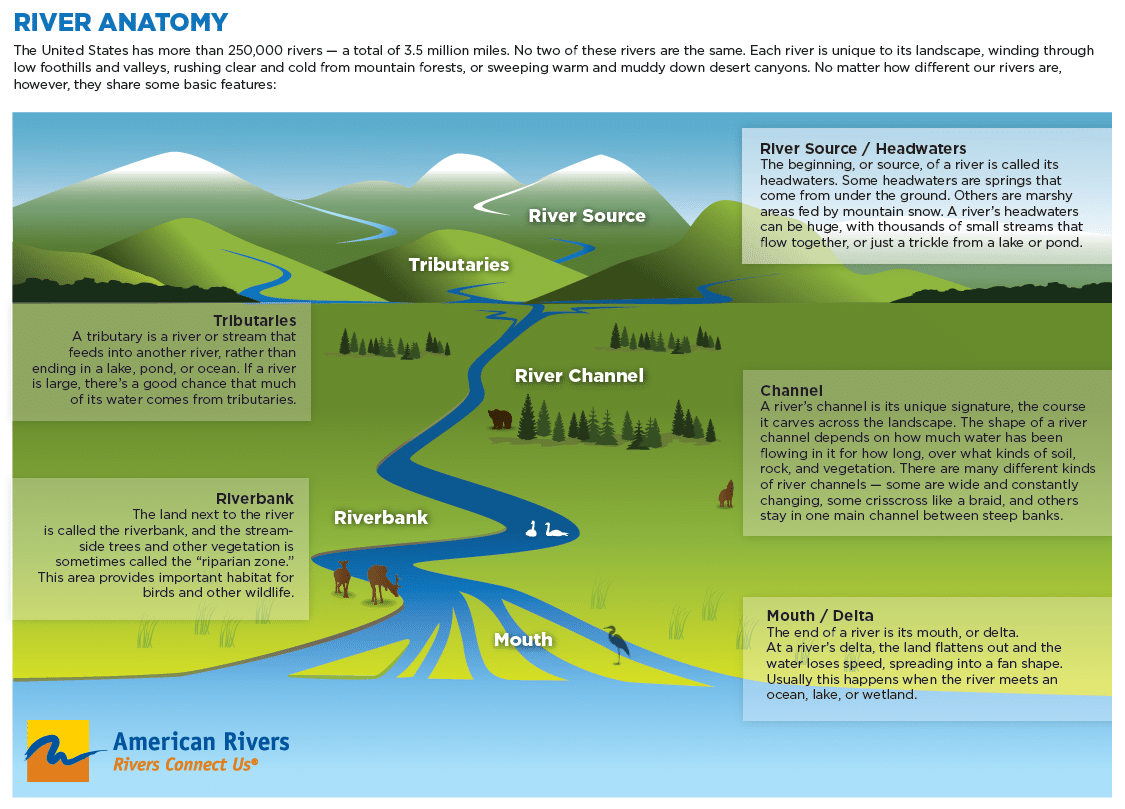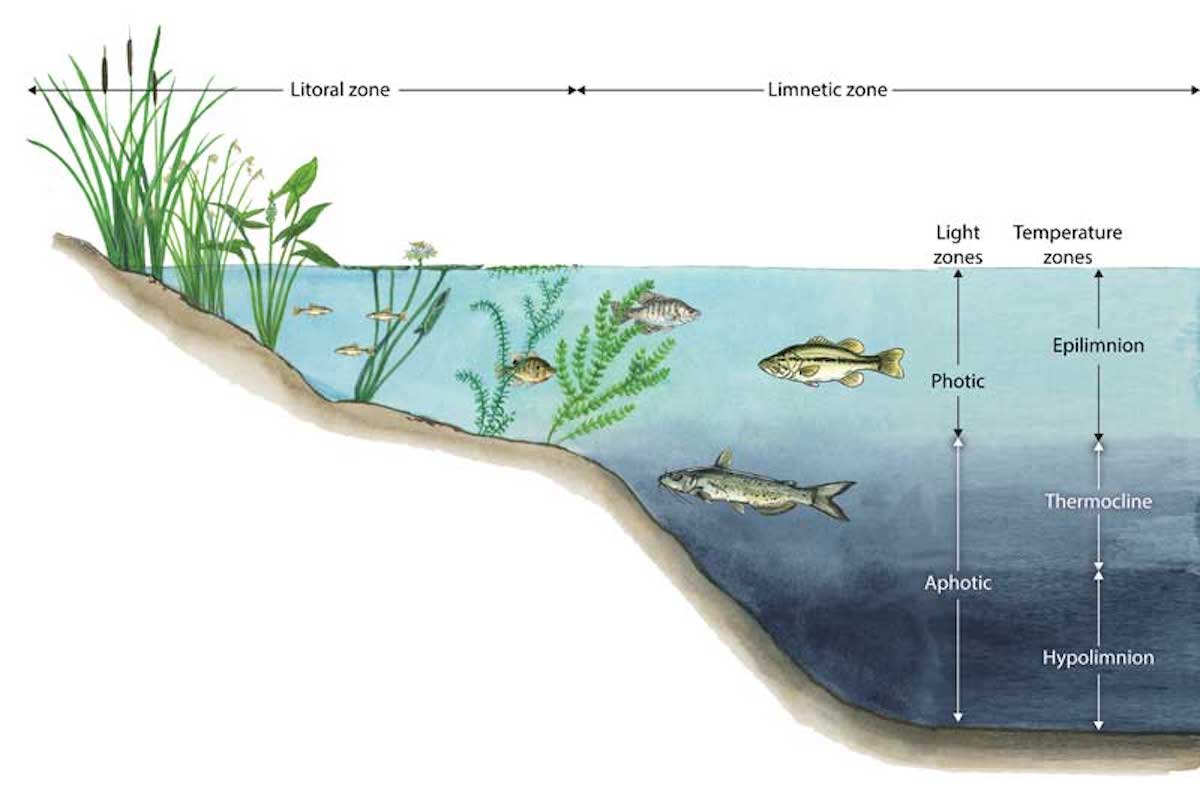uncover
Aquatic Ecosystems
More than one system at work
Welcome to the Hackensack River Watershed! Because of its coastal location, the Hackensack encompasses many kinds of aquatic systems – you may already know something about these. Take a moment to refresh your memory or learn something new.
Rivers
from USGS Water Science School - Rivers and Streams
Rivers, streams, and creeks are all names for water flowing on the Earth's surface. A river forms from water moving from a higher to a lower ground because of gravity. When rain falls on land, it either seeps into the ground, called infiltration, or becomes runoff. Both runoff and groundwater contribute to rivers.
Since life began on Earth, rivers have been important to all living things. It isn't by chance that rivers run through so many cities. Historically, cities have been built along the banks of rivers because humans depended on rivers for transportation, drinking water, flood control, irrigation, power generation, and even waste disposal.
The characteristic that makes rivers a unique aquatic system is the flow of water in only one direction. These ecosystems depend on a river’s current, which is the speed and direction of the water. Faster moving water is more turbulent which means the water currents vary with depth and time. Turbulent water has more dissolved oxygen, which fish and other aquatic life need to survive. Faster-moving water supports more biodiversity than slower-moving water.
To learn more: National Geographic Resource Library - Rivers
Lakes
from National Geographic
A lake is a body of water that is surrounded by land. The water in lakes comes from rain, snow, melting ice, streams, and groundwater seepage. Most lakes contain freshwater. There are millions of lakes in the world. They are found on every continent and in every kind of environment -- in mountains and deserts, on plains, and near seashores.
Lakes vary greatly in size and depth. Some lakes are small enough to fit in your backyard - they are called ponds. Other lakes are so big that they are called seas. The Caspian Sea, in Europe and Asia, is the world’s largest lake, with an area of more than 143,000 square miles (370,000 square kilometers). Some lakes are shallow enough to wade across while the deepest lake in the world, Lake Baikal, in Russia, is over a mile deep. A lake’s physical properties like size, depth, temperature, and chemical properties like salinity and the amount of nutrients will determine what lives in and around it. Lakes have zones that define where and what species live and thrive in the system. To learn more about these zones, visit this page from Michigan State Univ. Extension.
Aquatic animals like fish and invertebrates, and aquatic plants like water lilies make their homes in lake water, but there are just as many or more semi-aquatic organisms that depend on lakes to survive. Semi-aquatic means they need both land and water to survive. These organisms include animals like beavers, salamanders, and turtles; plants like cypress trees and cattails; and insects like dragonflies and damselflies.
To learn more: National Geographic Resource Library - Lakes
Estuaries
from EPA page on estuaries
An estuary is a body of water where freshwater coming downstream from rivers and streams mix with salt water coming in from the ocean. Estuaries, and the land that forms their edges, are places of transition from land to sea. Estuaries are affected by tides. They are also protected from ocean waves, winds, and storms by landforms such as barrier islands and peninsulas.
Estuary systems are very productive, meaning they support a LOT of life. An estuary produces more organic matter each year than the same size forest, grassland, or farm. These protected waters also support unique communities of plants and animals. These communities are specially adapted for life at the edge of the sea.
Many different habitat types are found in and around estuaries. They include shallow open water, freshwater and saltwater marshes, and swamps. Other habitats include sandy beaches, mud and sand flats, and rocky shores. Still others are oyster reefs, mangrove forests, river deltas, tidal pools, and seagrass beds.


